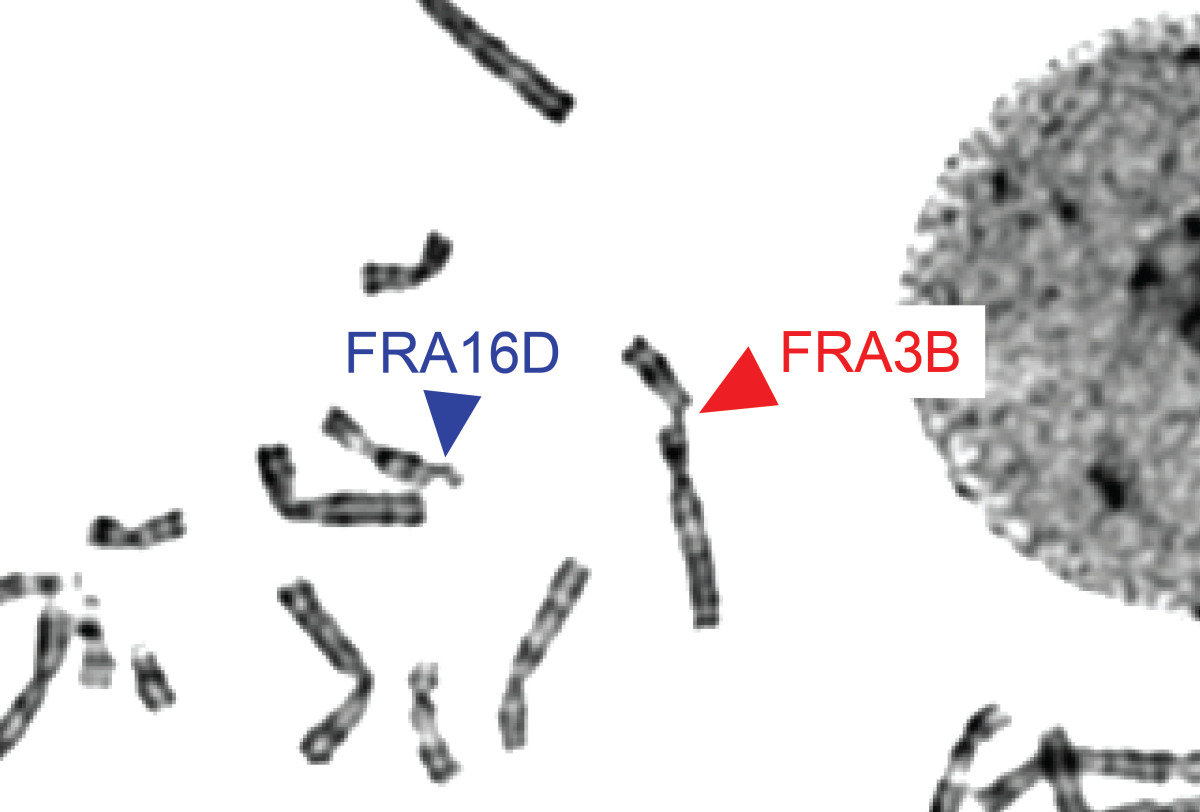Mammalian CNV Formation
Overview
Dr. Wilson has worked for more than a decade with Dr. Tom Glover, an expert cytogeneticist and leader in the study of chromosomal common fragile sites (CFSs). CFSs are regions of chromosomes that are highly susceptible to forming lesions, known as “breaks” and “gaps”, on metaphase chromosomes. They are often used as a hallmark of genomic instability upon replication stress.
Common fragile sites (CFSs). Typical breaks and gaps seen on metaphase chromosomes at CFS loci FRA3B (the FHIT gene) and FRA16D (the WWOX gene) upon replication stress.

Common fragile sites (CFSs). Typical breaks and gaps seen on metaphase chromosomes at CFS loci FRA3B (the FHIT gene) and FRA16D (the WWOX gene) upon replication stress.
Together we have explored whether CFSs are also subject to mutation accumulation in response to replication stresses, in particular chromosomal rearrangements in the form of copy number variants (CNVs) or other structural variants (SVs). Indeed they are, but with a specific pattern where hotspots of mainly deletion CNV formation are observed in a subset of human genes that are extremely large (>0.5 Mb). Over a series of collaborative papers we have shown that many forms of replication stress will induce this CNV pattern, but only at large genes that are actively transcribed.
In recent studies, we presented data consistent with other literature that transcription causes CFS genes to undergo extremely late replication in the cell cycle, even in M-phase by Mitotic DNA Synthesis (MiDAS) as described by Hickson and colleagues . This late replication is the best candidate for the association of CFSs with CNV formation. In contrast, our work, supported by analysis from other labs, showed that R-loop formation was not abundant at these loci and thus did not appear likely to be a main contributor to their instability.
CNV induction by transcription-dependent replication delay. CNV hotspots form when transcription of extremely large genes leads to a prolonged replication delay under stress (top). Poorly described repair mechanisms lead to replication rescue or CNV formation (bottom).

CNV induction by transcription-dependent replication delay. CNV hotspots form when transcription of extremely large genes leads to a prolonged replication delay under stress (top). Poorly described repair mechanisms lead to replication rescue or CNV formation (bottom).
Goals and directions
Future goals are to:
- better understand the precise mechanisms by which de novo CNV/SV junctions form at CFS loci
- establish the biological significance of mutations formed at CFS genes in vivo
- extend the concepts learned at CFS loci to the rest of the genome through continued advances in associated genomic technologies